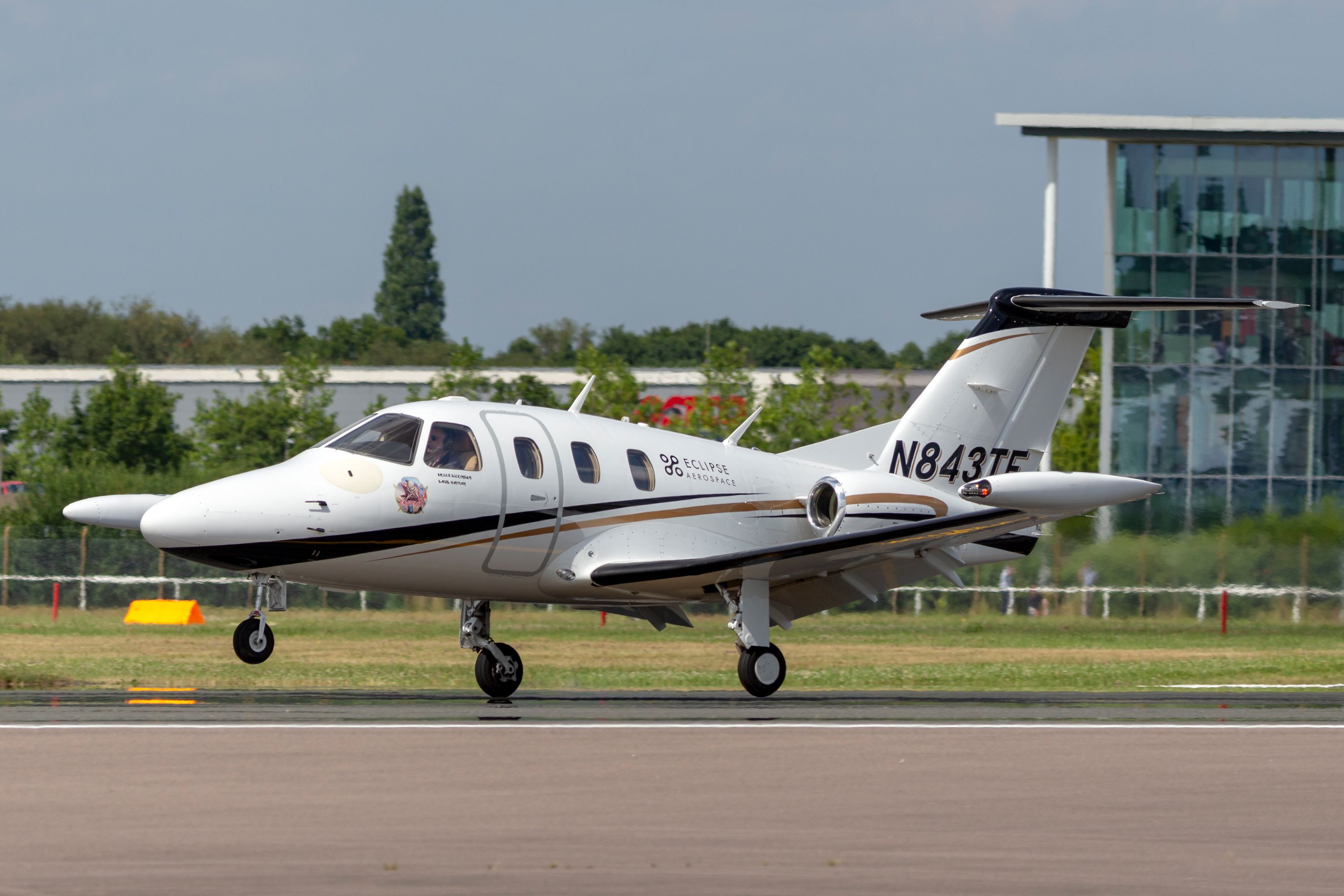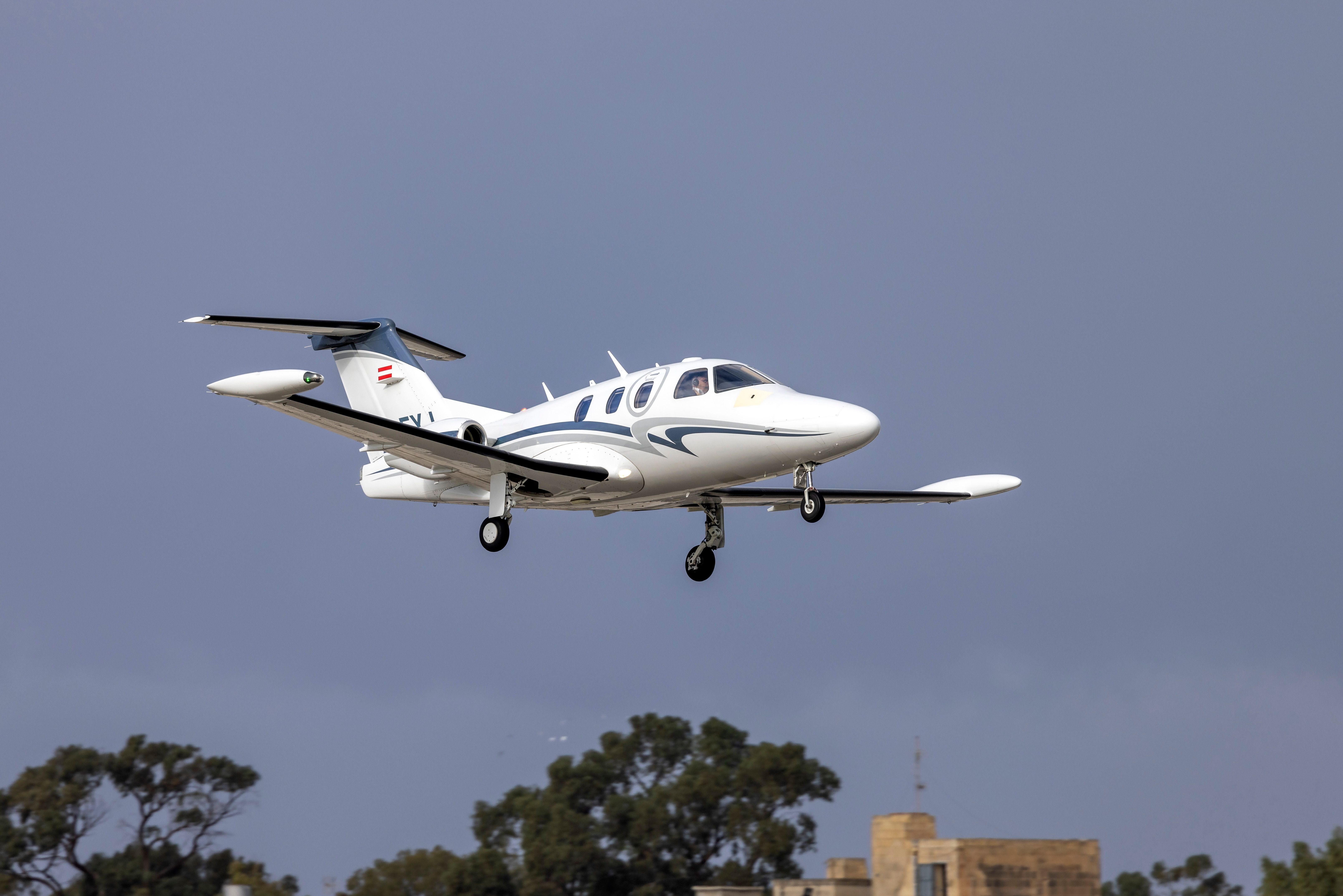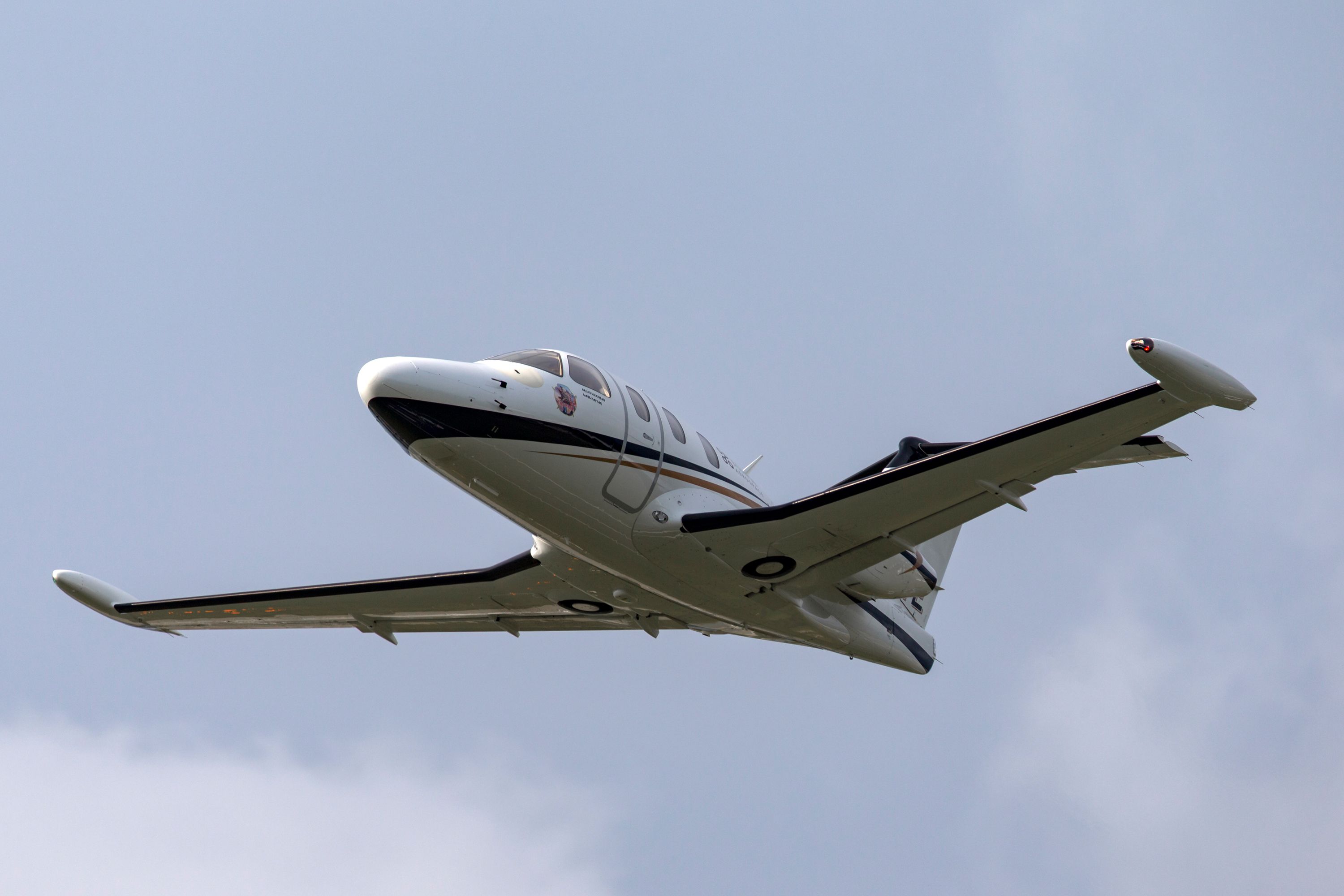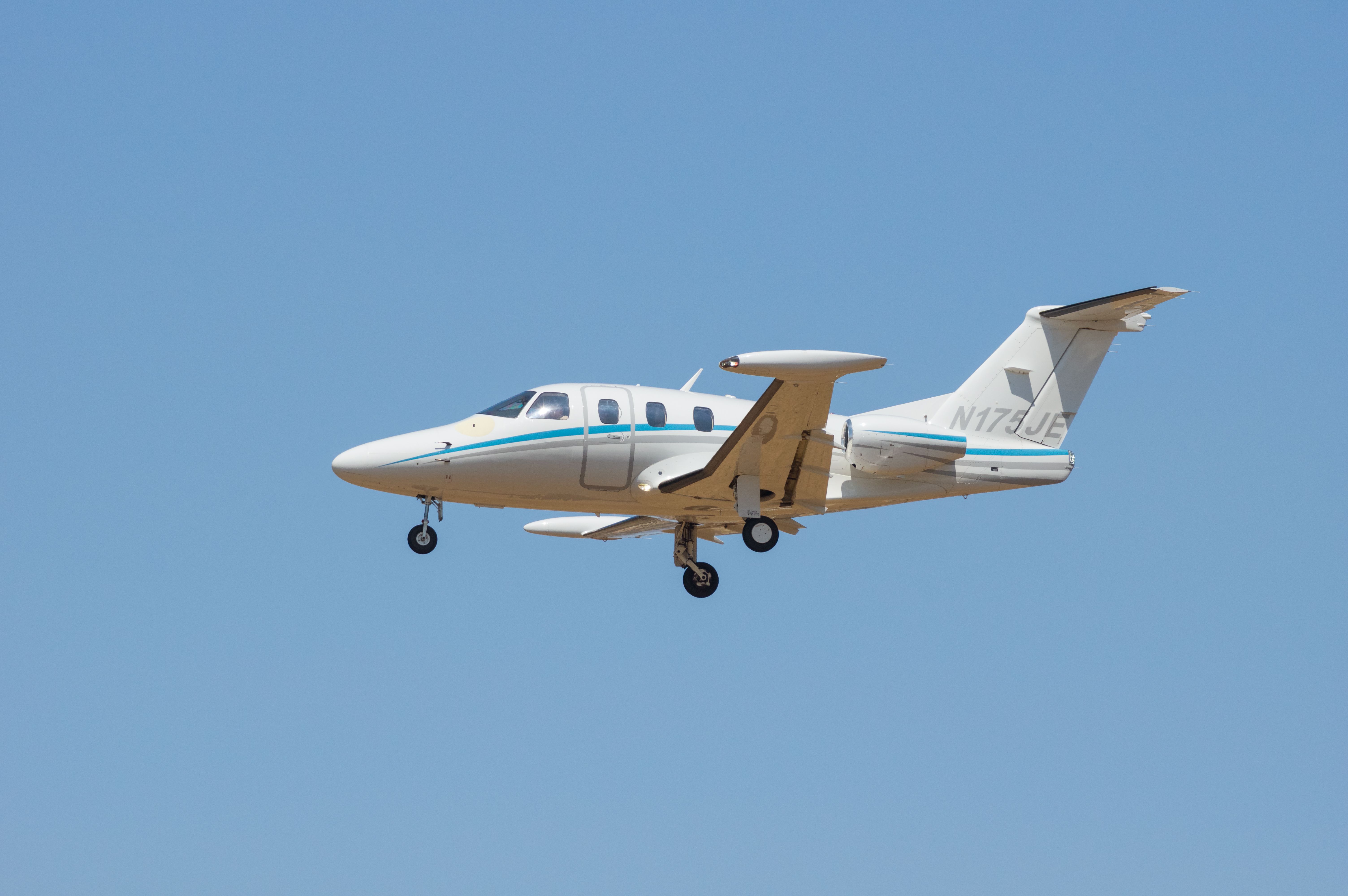Summary
- Eclipse Aviation was founded in 1998 to develop the Eclipse 500, reaching top speeds of 370 knots.
- Despite initial popularity, Eclipse filed for bankruptcy in 2008 due to safety concerns and funding issues.
- Unique features of the Eclipse 500 include its aluminum frame, Avio avionics, and capacity for six passengers.
Eclipse Aviation, historically based in Albuquerque, New Mexico, was an aircraft manufacturer founded in 1998. Its original purpose was to begin the development of a very light business jet, which would eventually be called the Eclipse 500.
This jet was an minuscule business jet that was based on the Williams V-Jet II demonstrator initially displayed in 1997. However, the company eventually ceased to exist due to lack of funding and filed for Chapter 7 bankruptcy in 2007. Eventually, the bones of the company will be merged into Kestrel Aircraft before meeting a similar faith in 2021.
Photo: Ryan Fletcher | Shutterstock
However, during the existence of Eclipse Aviation, it produced the well-known light jet, the Eclipse 500. This light jet was developed for several years in the early 2000s and was introduced in 2006. Over 250 aircraft were sold from 2006 through 2008. However, the end of the Eclipse came when Eclipse Aviation was forced to file for bankruptcy. Let’s take a closer look at the history of the Eclipse 500 and why it was popular in the mid-2000s.
Brief history
As previously mentioned, Eclipse Aviation was originally founded to develop the Williams V-Jet II demonstrator. Scaled Composites built this aircraft as a testbed for engines built by Williams International. It was displayed at the 1997 Oshkosh Airshow and received a generally positive response. However, Williams did not intend to produce the aircraft and instead wanted to continue using it for engine testing. Because of this, Eclipse Aviation was founded to bring this small business jet to the market.
Photo: InsectWorld | Shutterstock
The company was founded in 1998, and the immediate development of a new prototype jet began. The first Eclipse 500 flew a few years later, in August 2022. However, the aircraft’s weight was increased and the original Williams engines were not as efficient. Pratt & Whitney agreed to supply the Eclipse 500 with new engines, and in 2004, the prototype flew for the first time with the Pratt & Whitney PW610F engines.
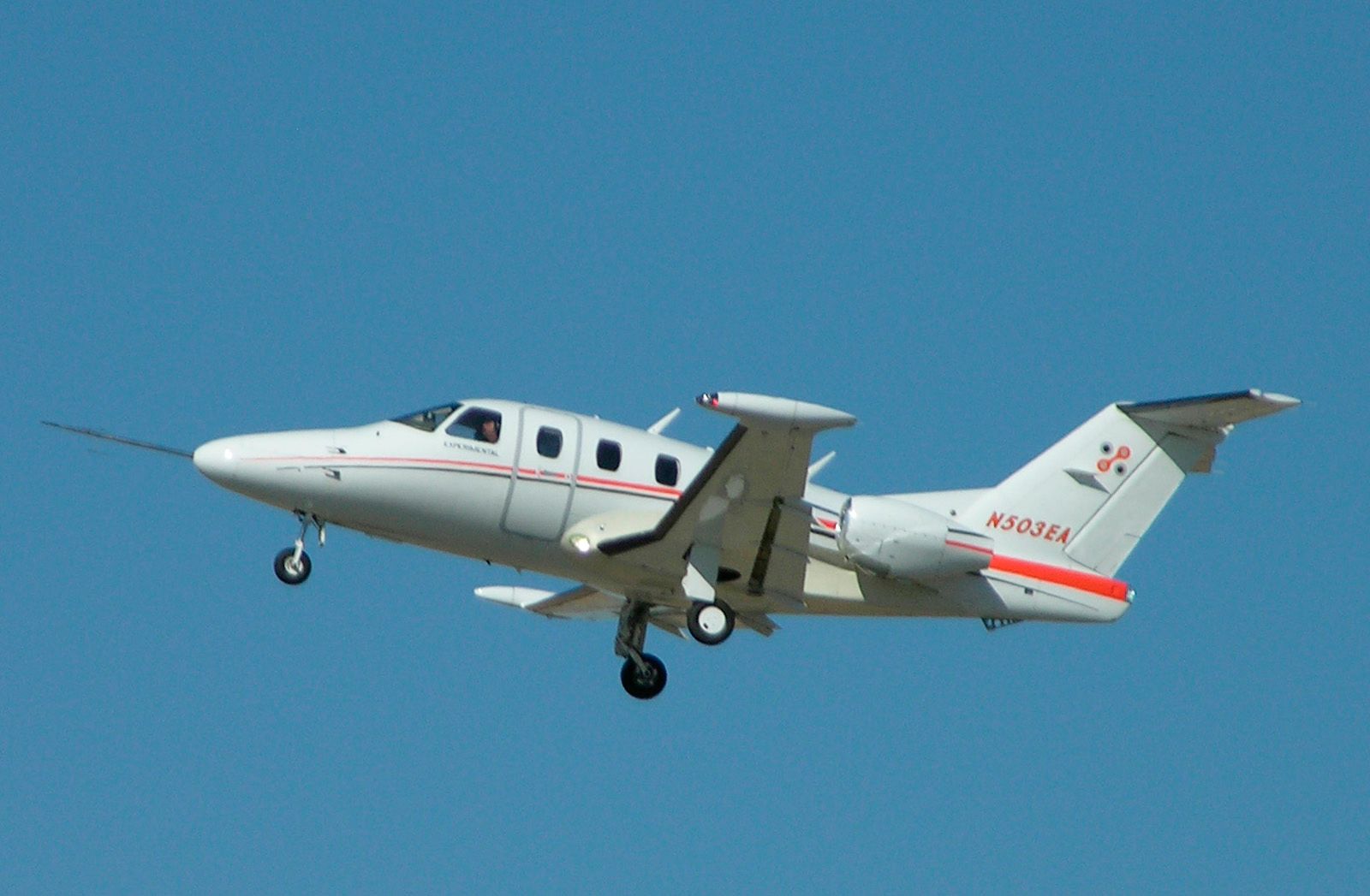
20 Years Ago Today: The Eclipse 500’s First Flight
The story of the Eclipse 500 – the only business jet without a toilet.
Eventually, the Eclipse 500 was awarded a partial Federal Aviation Administration (FAA) type certification in July 2006. Full certification was granted shortly after, as soon as improved wingtip fuel tanks were designed to meet the lightning strike criteria. Deliveries of the aircraft began in December 2006. Major operators of the aircraft include:
- DayJet
- Linear Air
- North American Jet Charter
- Rocky Mountain Sport Jets
- Channel Jets
In late 2006, Eclipse offered an upgrade to the Eclipse 550, which included new landing gear fairings, wheel covers, control surface hinge covers, extended wingtip fuel tanks, and other upgrades. This increased the maximum cruise speed and the range.
Downfall of Eclipse
Unfortunately, in June 2008, the FAA released an Airworthiness Directive (AD) that grounded all Eclipse 500s. An aircraft landing at Chicago Midway International Airport (MDW) tried to adjust its aircraft to changing headwinds. However, as he touched down, the engines on his Eclipse 500 surged to full power. The pilots overshot the runway before eventually landing without further injury and only damaged tires. A software change to the avionics system of the aircraft eventually led to the FAA clearing the Eclipse 500 to fly again. The AD lasted only four days.
Photo: Ryan Fletcher | Shutterstock
An investigation later began into whether the certification process for the Eclipse 500 was flawed. Several whistleblowers at the FAA feared that the Eclipse was certified with outstanding safety issues. The FAA conducted a special review of the certification. After several months, in September 2008, the FAA confirmed that the certification process was valid.
However, the damage to the image of the Eclipse 500 was already done. In November 2008, Eclipse Aviation entered Chapter 11 bankruptcy. Eventually, all of Eclipse Aviation’s assets were sold to Eclipse Aerospace, which was founded to purchase Eclipse Aviation. In 2013, the company attempted to sell the Eclipse 550, an upgraded light business jet. The company delivered 32 jets before sales slowed. The company eventually merged with Kestrel Aircraft to form One Aviation in 2015. However, the company entered Chapter 7 liquidation in 2021.
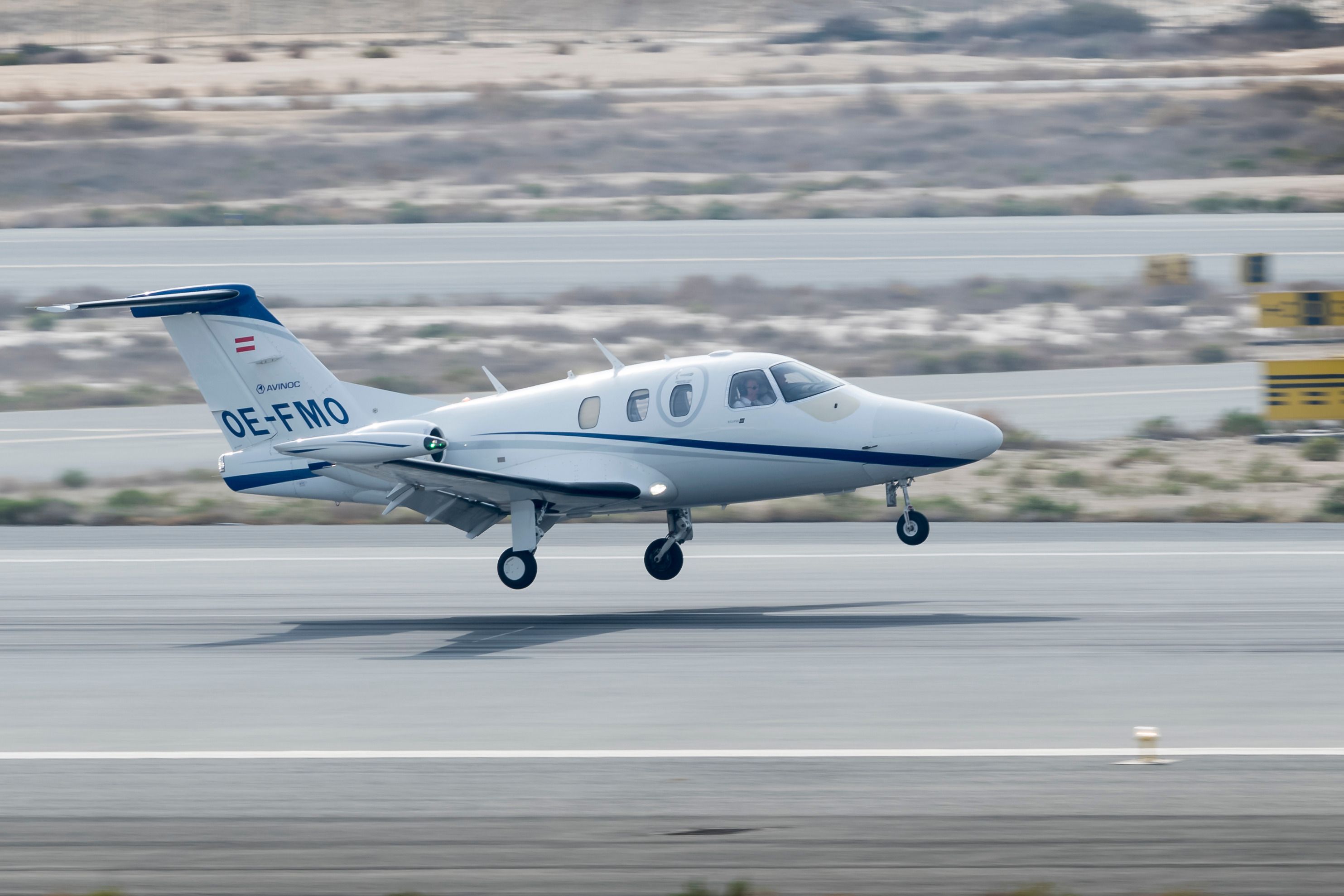
5 Cool Features Of The Eclipse 550: A Very Light Private Jet
The jet features state-of-the-art instruments and systems.
Interesting design features
As previously mentioned, the initial design of the Eclipse 500 was conceptualized from the Williams V-Jet II. However, the majority of the airframe was redesigned with all aluminum. To ensure the aluminum frame was cost-effective, new manufacturing techniques were developed. For example, the frame was friction stir welded to the surrounding skin instead of riveted like typical aluminum aircraft.
Photo: Angel DiBilio | Shutterstock
The Eclipse 500 utilizes a glass cockpit with an integrated avionics package. The avionics system that the aircraft used was called Avio. Later upgrades to the jet utilized Avio NG avionics.
The Eclipse 500 has the following specifications:
|
Capacity |
Six passengers |
|---|---|
|
Length |
33.5 feet |
|
Wingspan |
37.9 feet |
|
Height |
11.0 feet |
|
Maximum takeoff weight (MTOW) |
6,000 pounds |
|
Fuel capacity |
251 gallons (1,698 pounds) |
|
Fuel consumption |
1.10 pounds per mile |
|
Service ceiling |
41,000 feet |
With its lightweight airframe, combined with the powerful Pratt & Whitney PW610F engines, which each provide over 900 pounds of thrust, the aircraft reaches high cruise speeds and a long range for its small size. The Eclipse 500 can reach a maximum speed of 370 knots (430 miles per hour) and can reach a range of 1,125 nautical miles (1,295 miles). It also has an impressive rate of climb of 3,424 feet per minute. The aircraft can also land on runways that are only 2,250 feet long, and it can take off from runways that are 2,345 feet long.
Discover more from reviewer4you.com
Subscribe to get the latest posts to your email.
